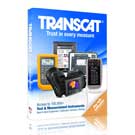My Cart
Cart is empty
Subtotal:
Shipping and Tax will be calculated at checkout.
Convert Cart to Quote?
Are you sure you want to convert your shopping cart to a quote?
Loading...
Login
Checkout as a new customer
Creating an account has many benefits:
- See order and shipping status
- Track order history
- Check out faster



